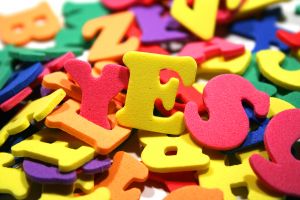
When learning a new language there are always those words that you just can’t seem to keep straight. They generally look or sound similar to each other and lead to recurring confusion and frustration. Here is a sampling of a list of commonly confused words I have put together for the use of my students. Writing out sentences containing troublesome words is helpful, as is creating a special page in the vocabulary section of your study binder for your reference.
In Spanish:
si, sí, se, sé –> if, yes, himself, I know
hoy, hay –> today, there is/there are
la mujer, mejor, mayor –> woman/wife, better, older
nueve, nuevo, el novio –> nine, new, boyfriend
primero, el primo, primavera –> first, cousin, Spring
el papa, el papá, la papa –> pope, daddy, potato
Example sentence
“Yo no sé sí se levanta temprano.”
“I don’t know if he is getting himself up early.”
In German:
die Küche, kochen, der Kuchen –> kitchen, to cook, cake
das Gesicht, die Geschichte, das Geschenk, das Geschäft –> face, story/history, gift, store
leben, lieben –> to live, to love
gegessen, gesessen –> eaten, sat
man, der Mann –> one, man
wen, wenn –> whom, when
Example sentence
“Ich backe den Kuchen in der Küche.”
“I bake the cake in the kitchen.”







